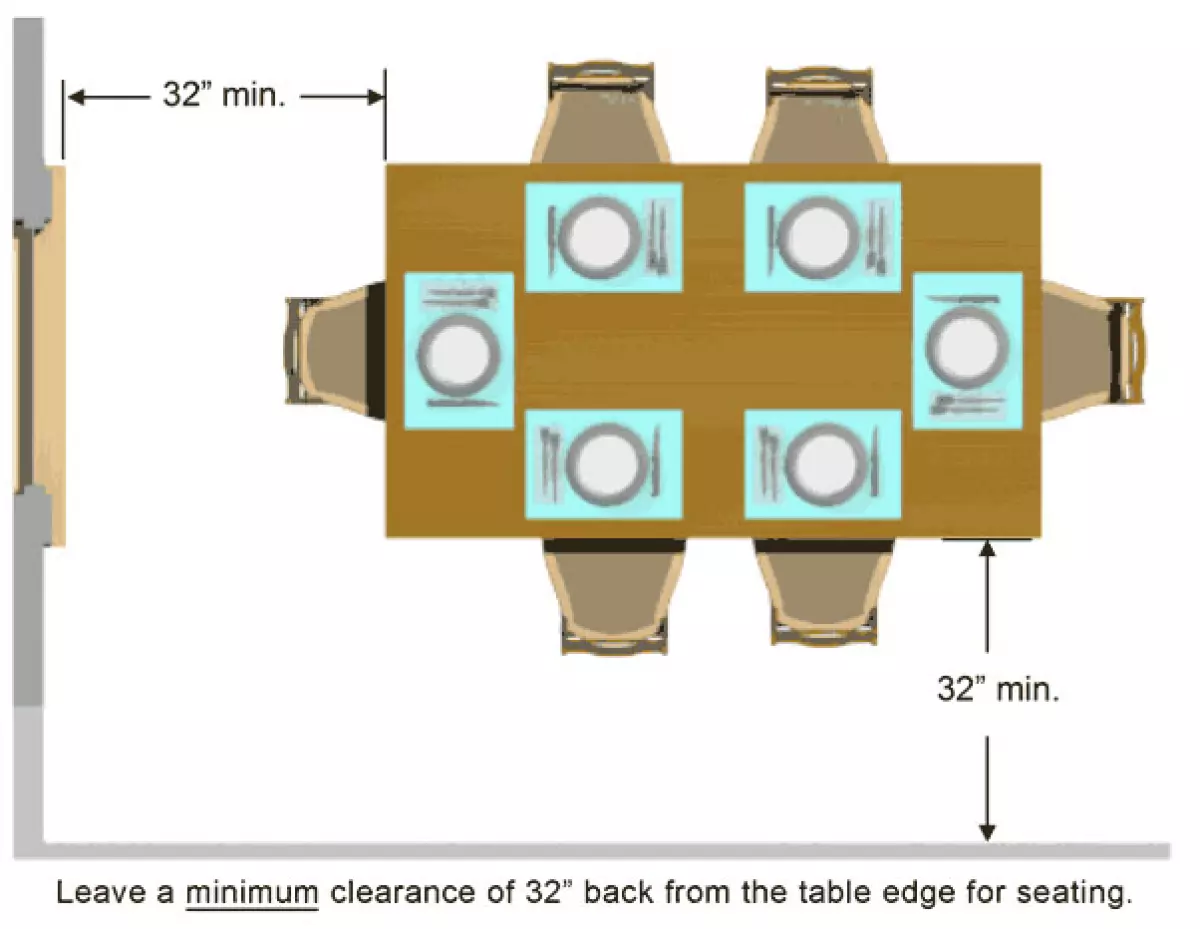Dining tables are more than just functional pieces of furniture. They are the heart of our homes, where we gather with loved ones, share meals, and create lasting memories. But finding the perfect dining table for your space can be challenging. As an experienced furniture maker with over 30 years of expertise, I've learned a few key things to consider when designing a table. In this article, I'll share my insights on how to choose the ideal dining table for your needs.
How Much Table Can I Fit in My Dining Room?
Before selecting a dining table, it's essential to consider the size of your dining room. You want to ensure that there's enough space for comfortable seating and easy movement around the table. As a general rule, leave at least 32 inches between the wall and the table edge for seating clearance. This prevents any accidental spills or knocked-over glasses. If you have additional furniture between the table and the wall, measure the distance between the table and the furniture instead.
 Caption: A well-designed dining table allows for comfortable seating clearance.
Caption: A well-designed dining table allows for comfortable seating clearance.
How Much Space Should I Allow for Each Person?
To ensure comfort during meals, it's important to allocate sufficient space for each person at the table. Allow a minimum space of 23 inches wide by 12 inches deep for each person. If you plan to use armchairs, extend the width to accommodate the entire chair, typically ranging from 26 to 30 inches. Additionally, make sure to leave 6 to 20 inches of space in the center of the table between place settings for dishes and decor.
 Caption: Adequate space between place settings ensures comfortable dining experiences.
Caption: Adequate space between place settings ensures comfortable dining experiences.
How Big Should My Table Be?
Determining the size of your table depends on the dimensions of your room and the number of guests you want to accommodate. For square tables, consider the following minimum sizes:
- 2 people: 30" x 30"
- 4-6 people: 48" x 48"
For rectangular tables, the minimum width and length vary based on the number of people:
- 2 people: 30" x 23"
- 4 people: 30" x 47"
- 6 people: 30" x 70"
- 8 people: 30" x 93"
- 10 people: 30" x 116"
 Caption: Choose a table size that accommodates your desired number of guests.
Caption: Choose a table size that accommodates your desired number of guests.
Remember, the smallest dining table we recommend is a 23-inch wide by 30-inch long table for two. This intimate size works well in small kitchens but may be too narrow for armchairs. Consider extending the width to accommodate armchairs or increasing the length to provide more space for dishes and decor. For larger rooms, opt for wider tables, but be mindful that excessively wide tables can hinder conversation and food passing.
Are Table Extensions Right for Me?
If you occasionally host larger gatherings, table extensions can be a practical solution. Extension tables feature tops that pull apart, allowing for the insertion of additional leaves and creating a larger table. There are different types of table slides available, such as standard slides and equalizer slides, which offer smooth and easy extension capabilities.
 Caption: Extension tables are a great option for accommodating larger gatherings.
Caption: Extension tables are a great option for accommodating larger gatherings.
What Should I Consider in a Top?
When it comes to tabletops, there are a few factors to consider. Top thickness is primarily a matter of personal preference, but generally, a thickness between ¾ inch and 1 inch is recommended. Thicker tops up to 1¼ inches can add a more rustic or country feel to the table. Overhang, which refers to the projection of the tabletop over the base, should typically be around 4 inches along the sides and ends for a balanced look.
 Caption: The top thickness and overhang contribute to the overall aesthetic of the dining table.
Caption: The top thickness and overhang contribute to the overall aesthetic of the dining table.
How High Should the Table Be?
The ideal height for a dining table is approximately 30 inches. This height strikes a balance between ensuring comfortable legroom and maintaining a reasonable height for placing dishes and eating. Dining table legs are typically 29 inches, leaving about an inch for the top thickness. If you opt for a thicker top, it's possible to shorten the legs accordingly. Additionally, consider the thickness and width of the apron boards that connect the table legs, as they provide crucial support.
Conclusion
Choosing the perfect dining table requires careful consideration of your dining room size, space per person, desired number of guests, and personal preferences. By following these basic design principles, you can create a dining space that is both functional and aesthetically pleasing. Whether you opt for a classic rectangular table or a space-saving round table, finding the right dining table will enhance your dining experiences for years to come.
Remember, our EasyBase system offers a hassle-free way to assemble a sturdy table base, allowing you to focus on designing a custom table that suits your style and needs. Visit our website to explore our pre-configured tables or use our user-friendly table configurator to design your own unique dining table. Enjoy the journey of creating a dining space that you'll treasure for a lifetime!

















